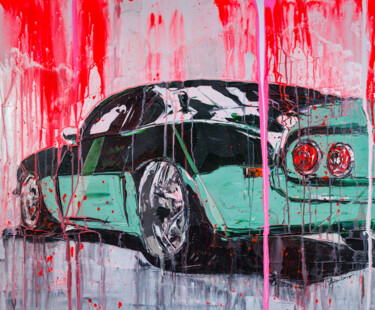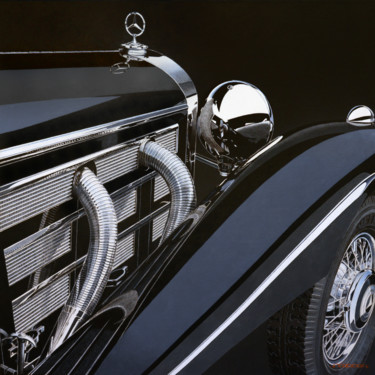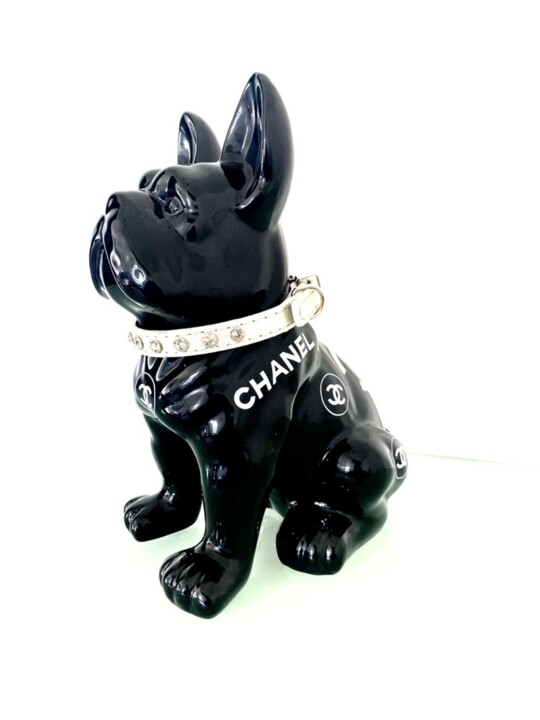 CHANEL’DOG (2023) Sculpture by The Kri$$$.
CHANEL’DOG (2023) Sculpture by The Kri$$$.
How did we get from Coca-Cola to Chanel?
"Pop art is industrial painting. I think the significance of my work is that it is industrial, that's what the whole world will become soon. Europe will be the same way, soon, it will no longer be American, it will be universal."
The above quote by Roy Lichtenstein definitely predicted the advent of today's globalized society, a phenomenon by which capitalism has spread by eliminating barriers between states to impose a global economic and cultural model, in which multiple luxury brands have become among the main subjects of contemporary Pop art. But what are the beginnings of this trend and how has it evolved over the years? First of all, it is good to briefly clarify "the ideology" of the aforementioned art movement in order to demonstrate, later on, its evolution, aimed at initially giving visibility to mainly supermarket brands and, later on, to the evidently more elite ones. Starting from the basic concepts of Pop art, it was distinguished by the use of highly identifiable images, which, taken from the media and popular culture, have, along with Neo-Dada and other movements, challenged the very definition of art, shifting the latter concept into a dimension of celebration and elevation of the everyday. Precisely in this sense, that is, pursuing the intent of blurring the boundaries between "high" and "low" culture, are to be understood the images that the undisputed master of the movement, Andy Warhol, created during the 1960s, which, aimed at a new interpretation of the Coca-Cola brand, pursued the intent, with the equally well-known Campbell's Soup Cans, of externalizing the products that were part of the artist's life. These democratic commodities, as they were accessible to the masses, would be juxtaposed during the later 1980s with more elitist lithographs, which, like that of Chanel (1985) were part of the Ads portfolio, aimed at highlighting not only the French brand, but also some of the most powerful American companies, such as, for example, Mobilgas, Paramount Pictures, Disney, and Apple Macintosh, accompanied by the foreign brands Volkswagen and Blackglama. Going back to Chanel, the lithograph was born to celebrate, inspired by an advertisement from the 1960s, a perfume, which, to say the least, was iconic and a favorite of Marilyn Monroe, and was presented in a simple and transparent bottle, taking shape in a minimalist design, which was surely behind its timeless success. At this point it becomes clear to our eyes how in the latter case the celebration of everyday objects, well exemplified by the aforementioned Coca-Cola, is replaced by the "idolatry" of luxury goods, proposed as a mere allusion, exaltation and ostentation of a state of well-being, to which the masses covetously aspire. It is precisely to this incessant desire for possession that we owe the current success of luxury brands in contemporary Pop art, a movement that becomes the spokesperson for the climax into which modern ostentation pours, fomented by the spread of mounted and constructed social media images.
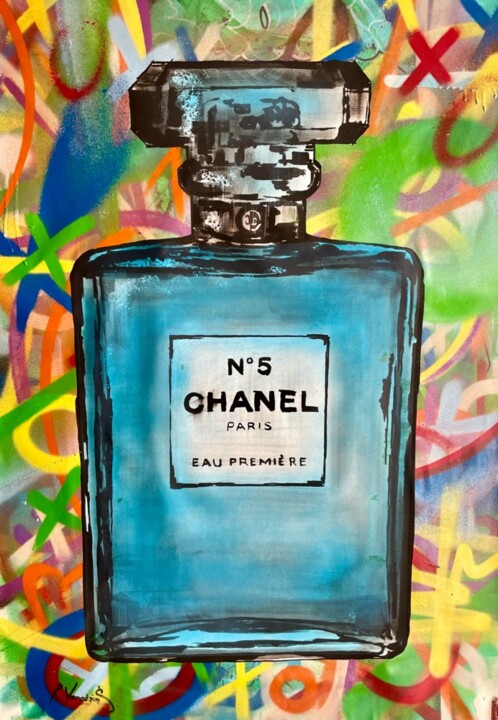 CHANEL (2022) Painting by Rinalds Vanadzins.
CHANEL (2022) Painting by Rinalds Vanadzins.
 CHANEL'S LOVERS (2021) Painting by Stan.
CHANEL'S LOVERS (2021) Painting by Stan.
Chanel today
Precisely the aforementioned compulsive need to share one's ease, as well as the yearning to crystallize the flavor of possession, is well exemplified today by Chanel (2021), a hand-finished canvas print by The Miaz Brothers, an artist duo from Lombardy known for having matured, during their long research journey, inclusive of photography, video and painting, a novel technique that has renewed the approach to portraiture, as his subjects, made primarily with airbrush and acrylics, present blurred contours aimed at generating enigmatic and evocative images. Precisely in this sense, Chanel (2021) also defies the viewer's perception, eschewing complete definition, although, the silhouette of the iconic perfume, is now impossible not to be distinguished, demonstrating the total diffusion, affirmation and recognizability of the iconography of luxury. In the aforementioned mode of reproduction of the perfume, which, certainly treasuring Warhol's example, wanted to depict its iconic bottle, was "analogously" realized Chanel (2022), a painting by Artmajeur artist Rinalds Vanadzins, which, executed with a mixture of acrylics and spray paint applied on canvas, resulted in a textured, dynamic and vibrant surface in which the smooth brushstrokes of acrylics contrast with the rough texture of spray paint, techniques designed to explicate the artist's multifaceted abilities to express himself and master various materials in order to generate visually striking Pop works. In the same vein as Vanadzins, another Artmajeur artist expressed himself, namely, Stan, whose "Pop Surrealism" is manifested in the kiss that takes life and form in the perfume liquid, a detail that immediately made me think of Salvator Dali, a master who gave his own particular interpretation of the well-known bottle, depicting on it his own "incomplete" self-portrait, in that it was intended to give form only to the Catalan artist's eyes, eyebrows and mustache. Returning to Stan, the contemporary French painter stands out for his unique style, aimed at combining Pop and Street art, trends that are reinterpreted with a distinct taste for the universe of the 1950s and 1970s, eras immortalized in their icons.
 ELSIR N°5 (2022)Painting by Simona Zecca.
ELSIR N°5 (2022)Painting by Simona Zecca.
For a less classical view of the brand
If the bottle of Chanel no. 5 has become, as per the examples cited above, the most well-known and popular form for alluding to the iconicity of the French brand, an analysis of the work of other contemporary artists shows us how the narrative of art has gone beyond the aforementioned "classicism," depicting, for example, a pair of characters on a lawn at the moment when, while one of them is enjoying a Starbucks drink, the other one finds himself, right above his head, the image of the logo of the multi-named brand, aimed at transforming the artwork, titled Chanel and part of the series Product Placement (2010), into a kind of mainstream advertising poster. I am talking about the work created by Alex Gross, a visual artist born in 1968, who, specializing in oil paintings on canvas whose themes include globalization, commerce, beauty, dark chaos and the passage of time, expresses himself through a Surrealist Pop language aimed at analyzing the cultural atmosphere of consumerist America, in which big brands such as, for example, Dior and Fendi are demonized in order to relate consumption to love and morality, stimulating the critical thinking of viewers, who are encouraged to develop a feeling of skepticism toward certain social standards. In a "similar" way, Artmajeur artist Simona Zecca's canvas Elisir No. 5 places the Chanel inscription in a context dominated by the human figure, catching the viewer almost unprepared, who, lost in contemplation of the main subject, also finds himself idolizing the deities of mass culture.
 GUCCI DREAMS (2021)Painting by Helen She.
GUCCI DREAMS (2021)Painting by Helen She.
 GUCCI IN BLOOM (2022) Collages by Géraldine G.
GUCCI IN BLOOM (2022) Collages by Géraldine G.
Pop art and brands - brands and Pop art
So far we have seen how art, which has paid homage to the most luxurious fashion, has taken the form of tacit advertising, without considering how the inverse relationship is also possible, aimed at taking place when a brand transforms its ads into real works of art, involving the work of contemporary artists, just as in the case of the surreal images and iconographies of yesteryear, aimed at coming to life in the Art Walls created in Milan, New York and Hong Kong by Spanish artist Ignasi Monreal for Gucci. A further form of the art-fashion relationship is realized when the most classic images from the figurative repertoire are used in the works, which are repurposed in a new consumerist Pop context, a concept well rendered by Artmajeur artist Helen She's David Fendi, a painting aimed at transforming Michelangelo's masterpiece into a popular fashion testimonial, caught in a pose on par with those assumed by the most well-known personalities from the world of entertainment, generally widely exploited by brands. Still on the subject of Helen She, she has also created Gucci dreams, a female nude, which, dear to the more traditional iconography of Titian's Venus of Urbino, Manet's Olympia, Giorgione's Sleeping Nude, etc., is posed in the manner of a comic strip, explicitly alluding to another Italian brand: Gucci. Finally, the relationship between art and fashion changes again in Géraldine G.'s collage and acrylic titled Gucci in bloom, a work in which it is probably the artist from Artmajeur who innovatively reinterprets the decorative motif, which appears on the packaging of Gucci's Flora perfume, although in Géraldine's artistic investigation the juxtaposition of advertising and natural subject matter appears very recurrent, aimed at linking the symbols of life par excellence to those of an equally endless creativity of a mainly consumerist nature.

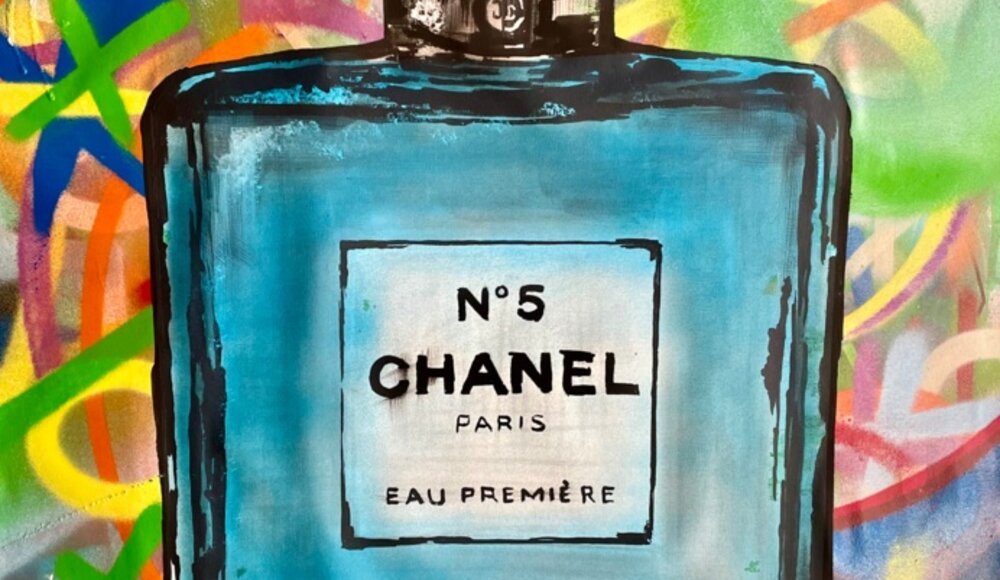
 Olimpia Gaia Martinelli
Olimpia Gaia Martinelli






